
As we’re watching the launch of the Dragon, I was reminded that they’re currently growing radishes in the Advanced Plant Habitat up on the International Space Station. 🙂
Peace,
-S
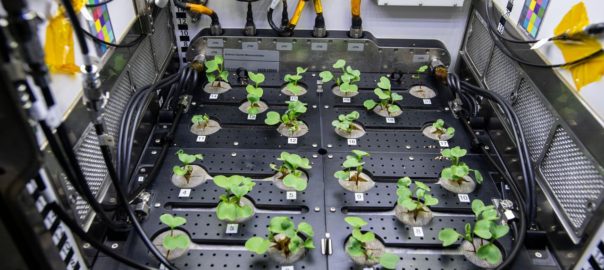

As we’re watching the launch of the Dragon, I was reminded that they’re currently growing radishes in the Advanced Plant Habitat up on the International Space Station. 🙂
Peace,
-S
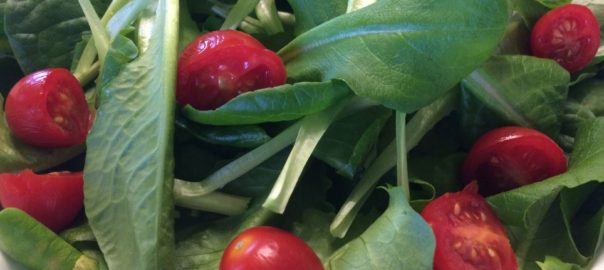
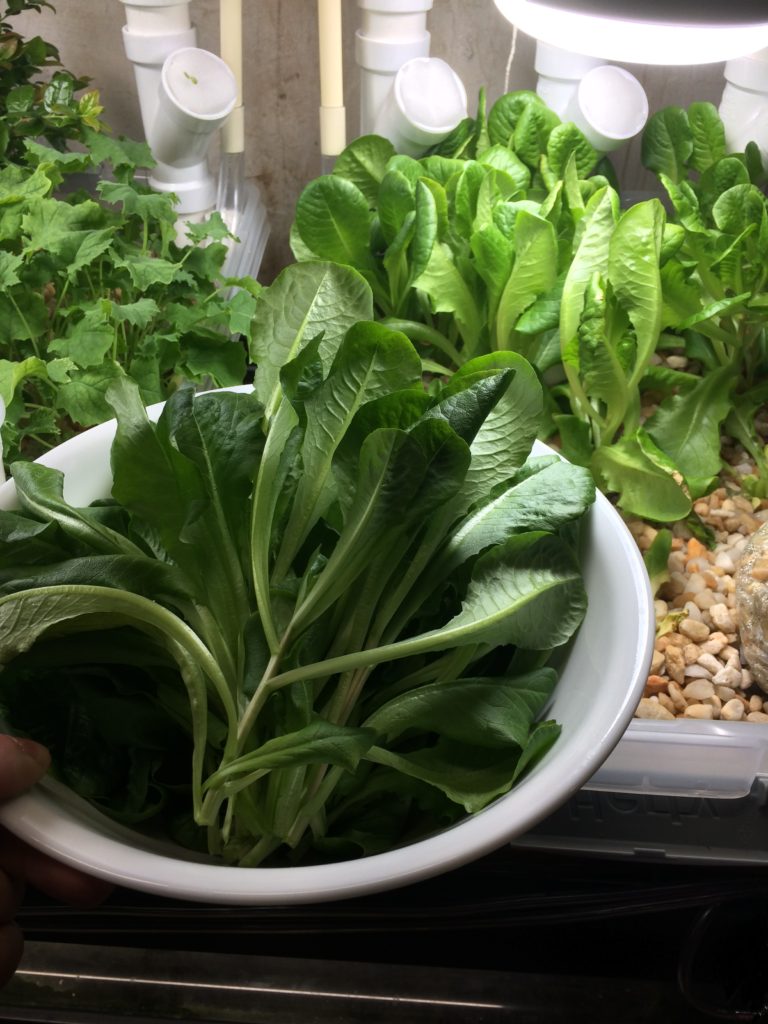
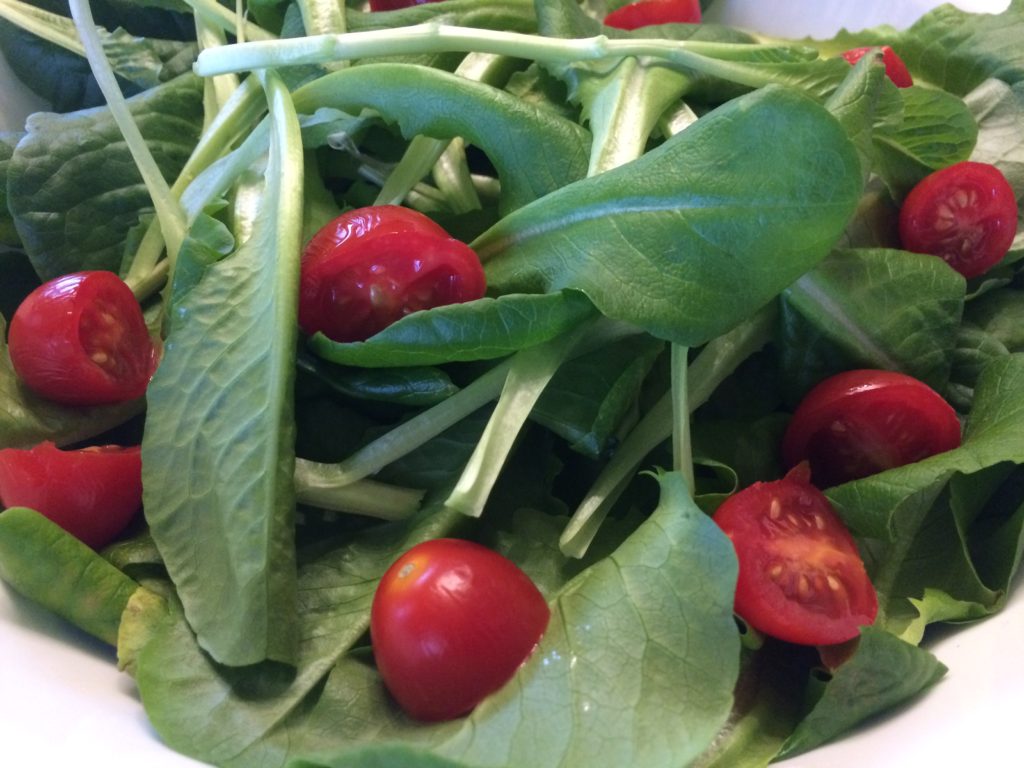
It got a little leggy, but it tastes magnificent. 🙂
Peace,
-Steve
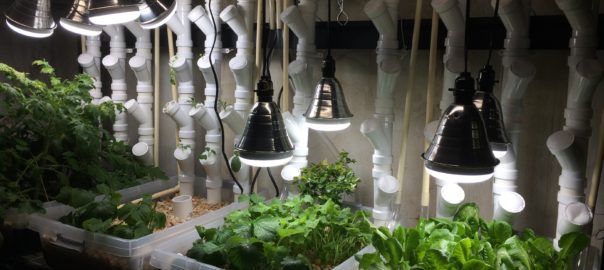
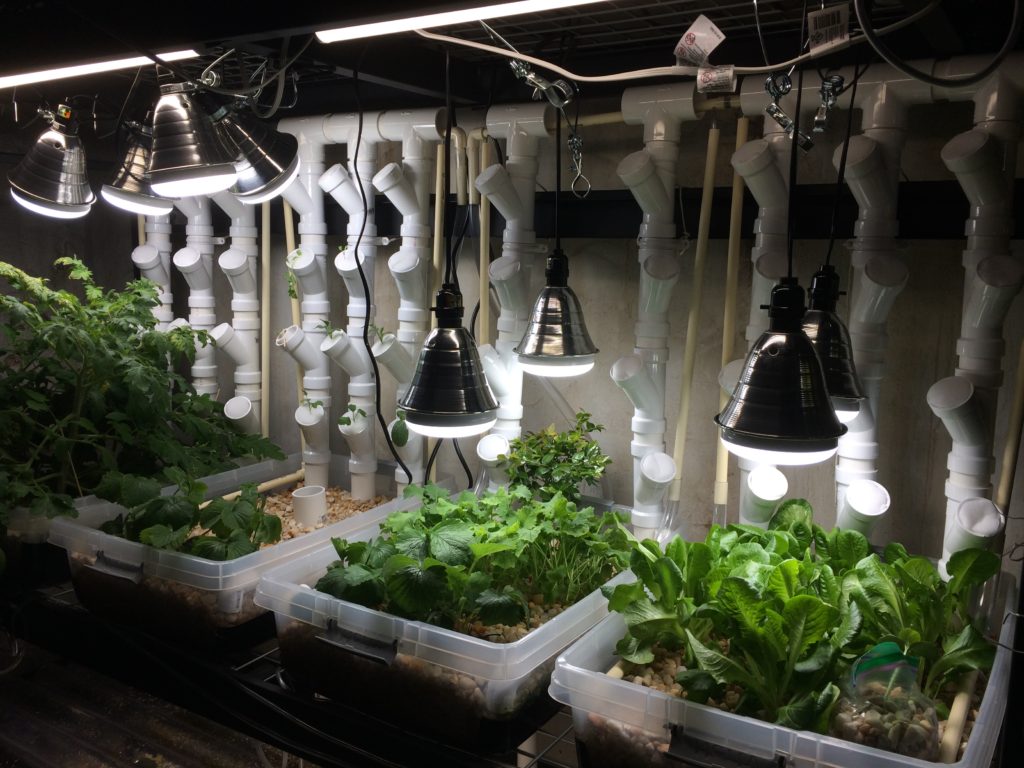
Last night I finally installed the rest of the drip wall in the back of my bigger rig. Where I originally planned out 48 bays, I had to settle with 44, because I forgot I planted the blueberry bush in an awkward position (so I’ll be training it to grow upwards in the place where the bay would be.
The plumbing was tricky, since I didn’t have all the parts I needed (and I learned on the fly a number of curious properties of hydrodynamics) but each set of grow beds is now fed from 5 ports on the spray bar on top made out of 1/2″ CPVC and 1/4″ tubing.
Three of the ports feed the three drip towers in the back of the bed (with one exception), where two are routed to he front corners of the bed (where I may install some additional drip towers, facing inwards, too, to catch the wasted light). Once parts come in, I’ll be making all of them more efficient by feeding them from their centers with a CPVC T-coupling rather than on the ends.
Successful plants to take to the the drip towers as of now include broccoli, chard, and one spaghetti squash (on the bottom, which I’m going to train to dangle over the edge of the shelf). More seedlings are on their way, growing Kratky-style in plastic containers until they’re large enough to survive the transplant.
It’s also time to do some cable management and clean things up a bit.
Peace,
-S
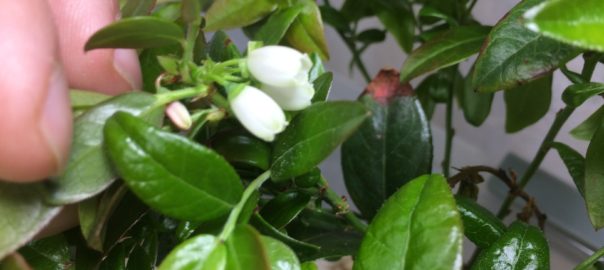
Had a surprise today. My tomatoes were already putting out flowers – and now they’re putting out bunches – but the strawberries have put out their first two blooms, and the blueberries were a complete surprise. The instructions for that cultivar stated that it could take up to two years for the plant to fruit, and just a month later we have berries on the way. 🙂
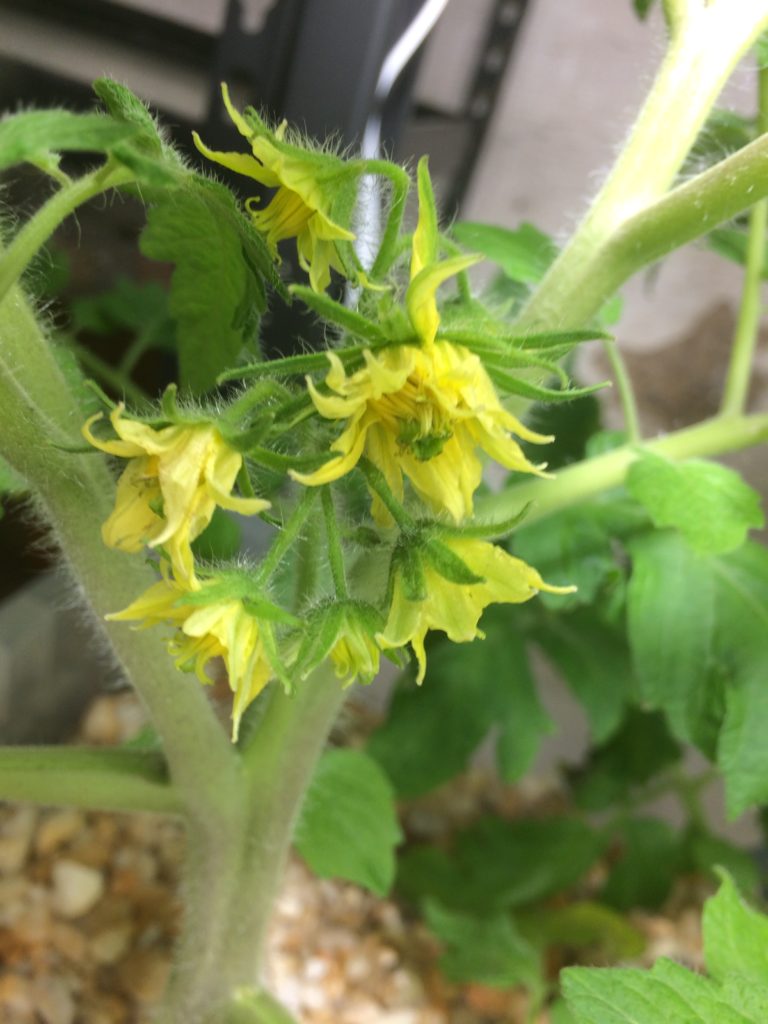
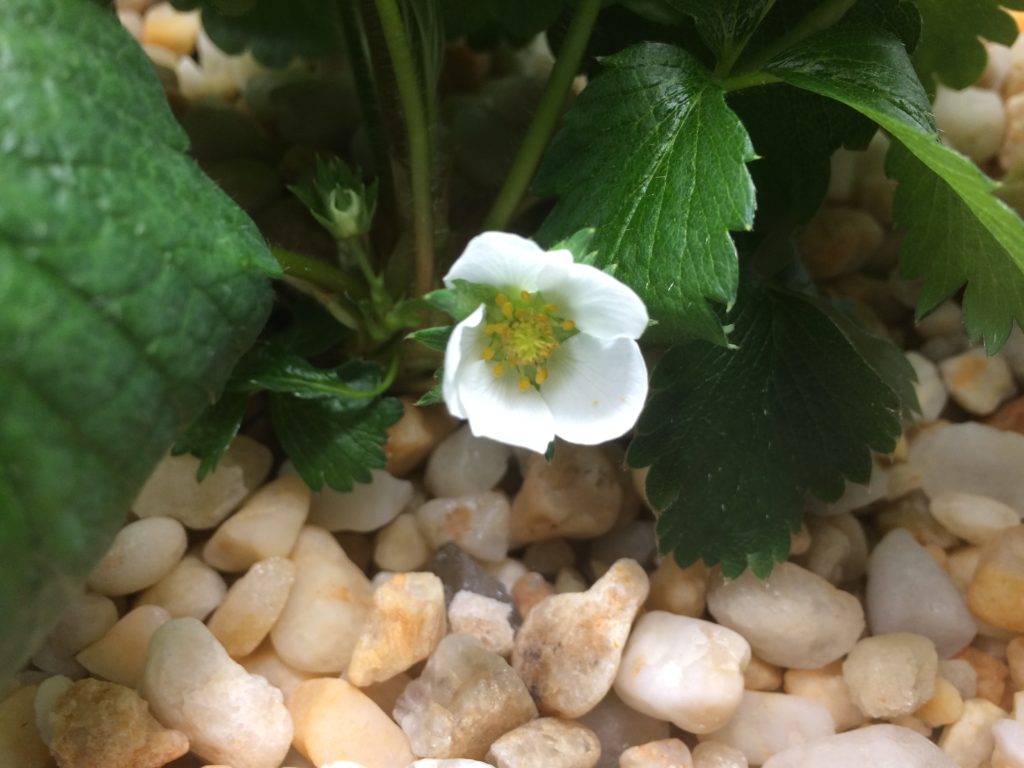
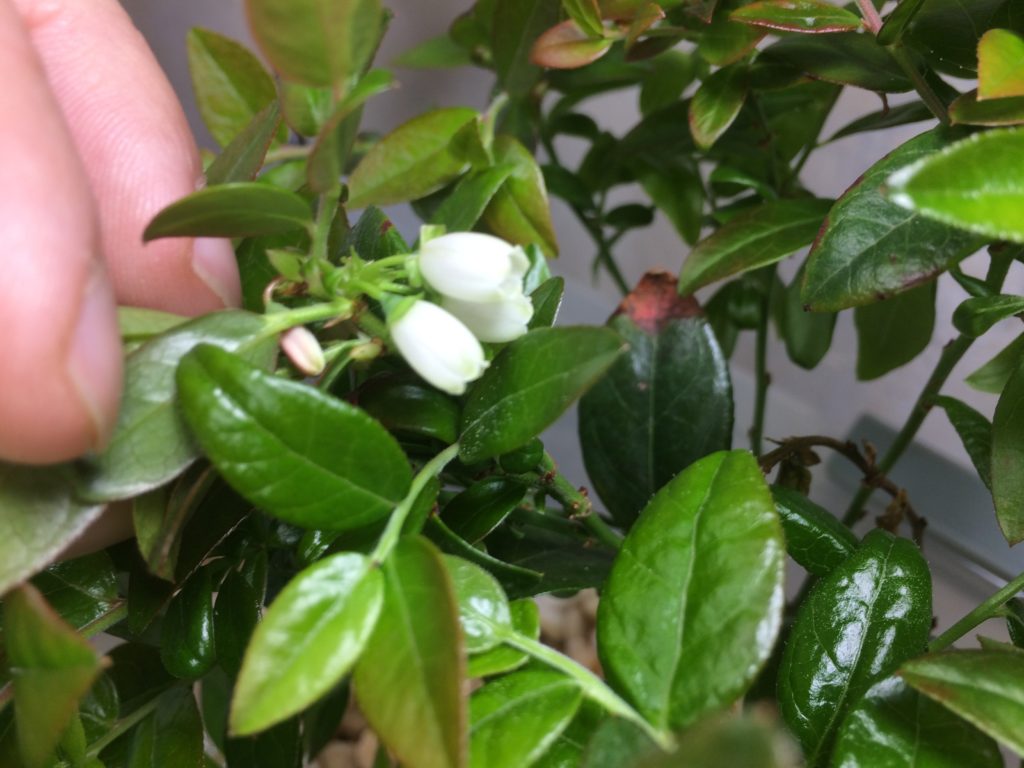
Peace,
-Steve
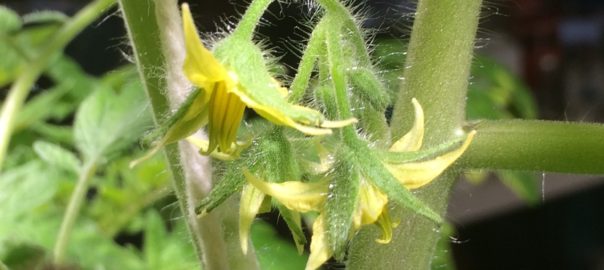
So everyone knows that I keep native (and naturalized) fish. In my collection I have various sunfish (bluegill, pumpkinseed, etc.), mummichogs, bullheads, shiners, creek chubs, mirror carp, and even a brace of goldfish (those laste two were a failed science experiment… but now beloved pets).
The wonderful thing about natives in NJ is that you don’t need to worry about heating your tanks (they’re comfy with the local weather), and that they all are quite happy in sub-optimal water conditions (they don’t mind low to even moderate levels of pollutants, they’re happy in virtually every pH a human wouldn’t mind swimming in, and some could care less about salinity etc.)
However, like all fish, they like to produce a lot of waste – in the form of ammonia (NH3) and ammonium (NH4+). In order to handle that waste, every aquarist needs to cultivate a colony of two different types of bacteria in the tank’s filter, gravel, and other surfaces that break the ammonia down. The first type of bacteria (nitrosomonas) break those compounds down into nitrite (NO2-) which is less poisonous that ammonia. The second type (nitrospira) take the nitrites and break them down into nitrate (NO3-). Like with humans, nitrate isn’t poisonous to fish, unless it’s in seriously high quantities.
Once the colonies of bacteria keeping this nitrogen cycle in check are large enough that there is virtually no ammonia or nitrite detectable in the water (i.e. they eat them as fast as its produced and ultimately turn them into nitrate) the tank is considered “in cycle,” and the major maintenance at that point is to do regular, weekly water changes to remove the excess nitrates – which are simply waste, and clean out the filter and gravel (where the bacteria grow) from residue.
However, there are plenty of other living things out there that absolutely love to eat nitrates, specifically plants: Especially big leafy greens, tomatoes, and other vine fruit.
This is where aquaponics comes in. Like with hydroponics where the plants are grown in gravel or other media with flowing water to deliver the nutrients, instead of using commercial hydroponics solutions, I’m able to use the water from my aquaria to grow vegetables and fruit. Tank water simply contains (nearly) everything your average garden needs to grow already in it, and the plants that feed off of it remove (nearly) all of the waste that conventional water changes and filter cleanings do.
It’s a serious win-win. 🙂
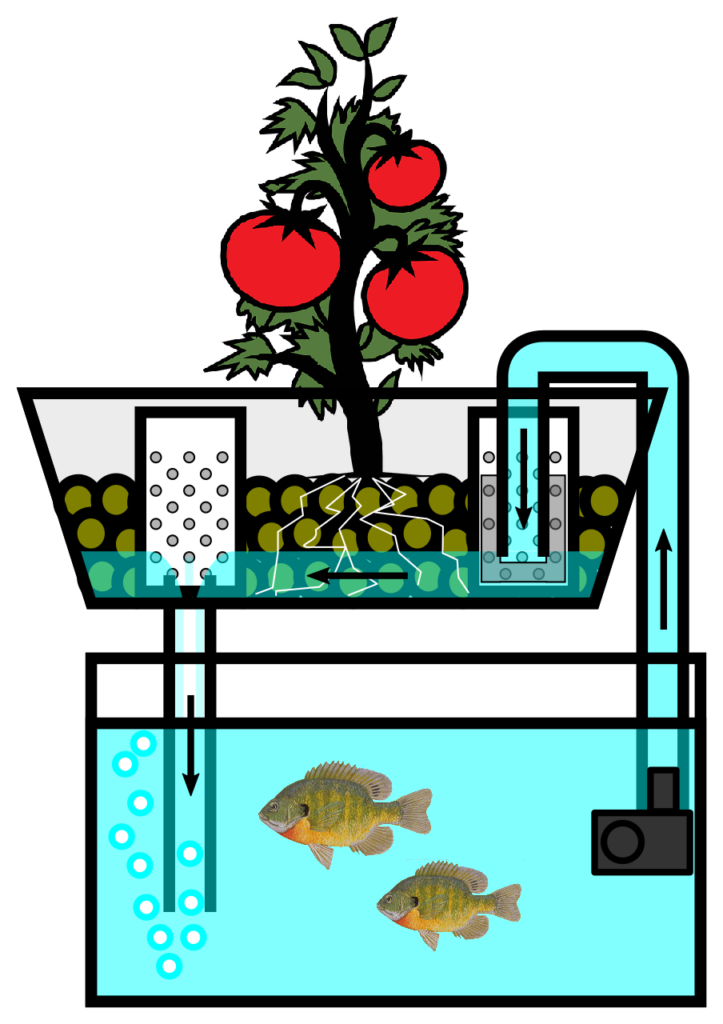
Now, with aquaponics, like with hydroponics, there are dozens of methods to choose from, and lots of highly opinionated people out there about what works best. My goal in putting together my prototype was to see how well a proof of concept system would work, made from a bunch of materials that I simply had lying around my house. To that end, based on the drawing above I put together:
In the end, the prototype looked like this:
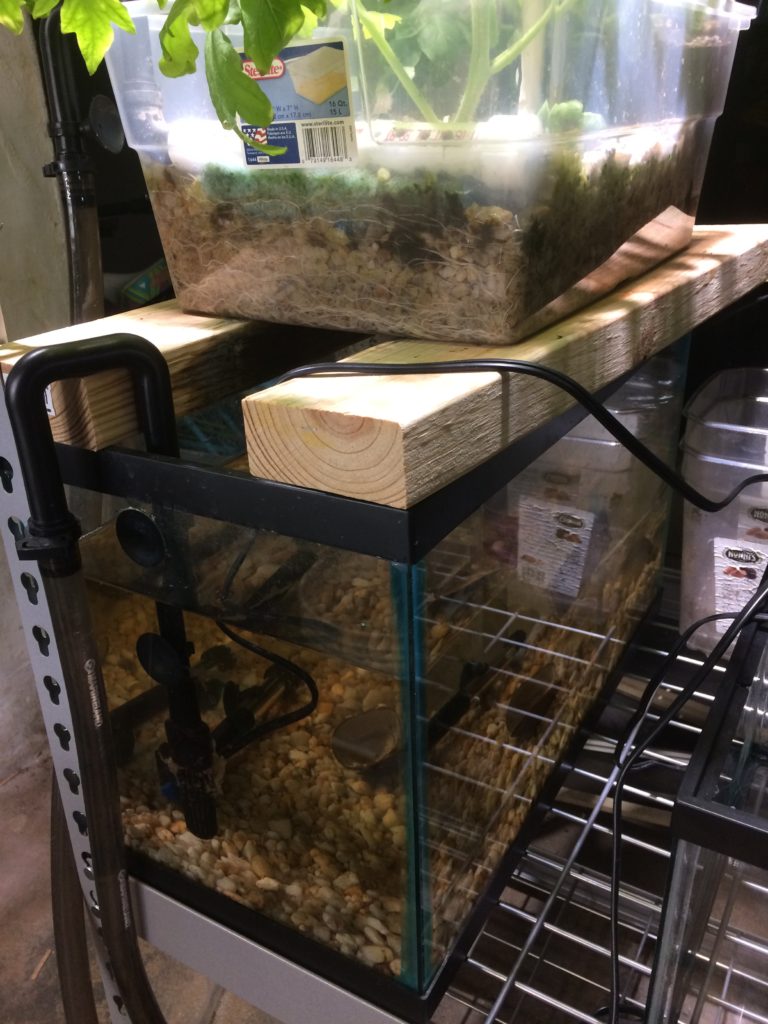
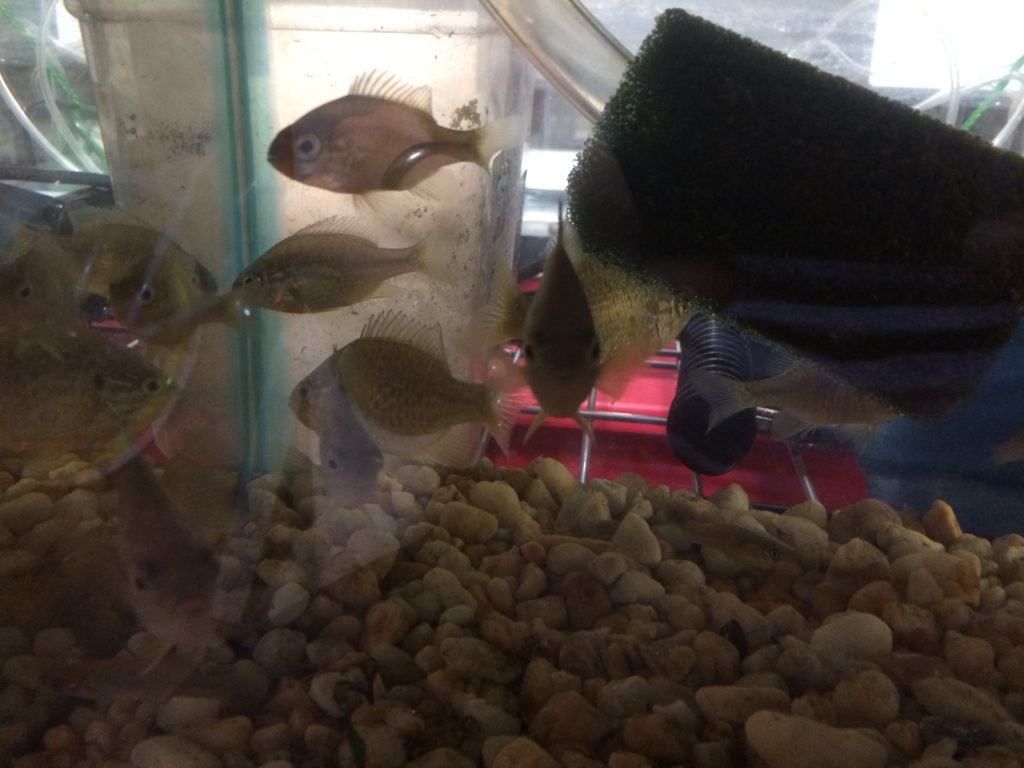
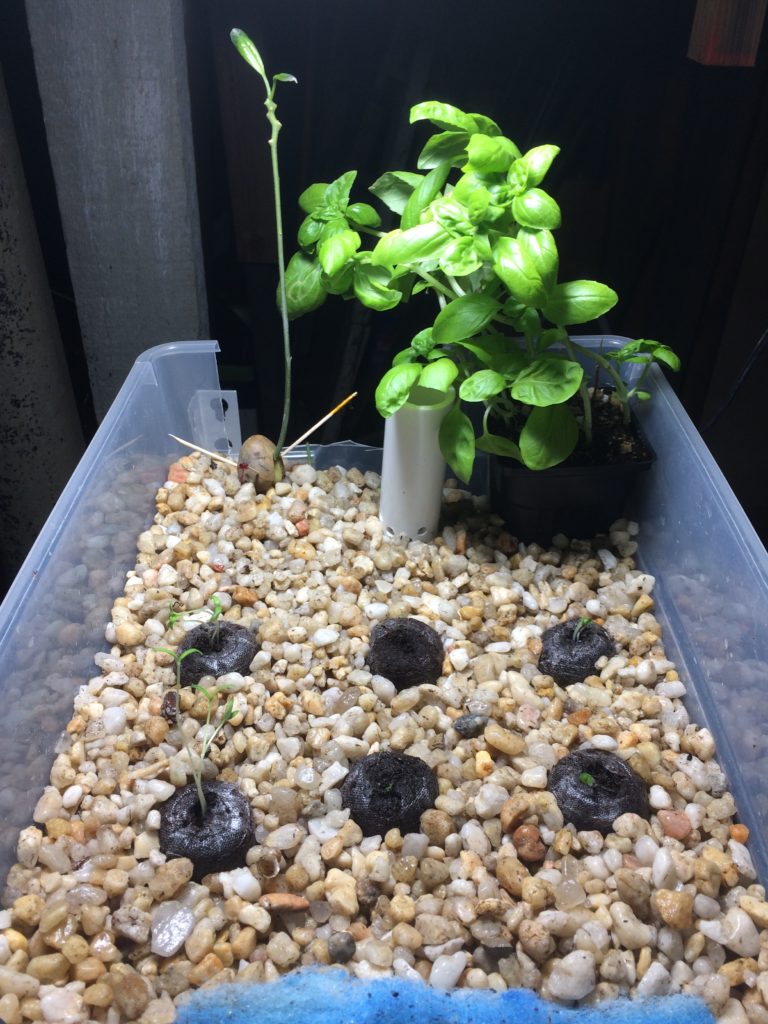
The canister filter pumped the water up into the grow bed, where it flowed over to the gravel guard on the output, and flowed back down into the tank, both cleaning and aerating the water at the same time. I had to re-house the basil and oregano, because the tomatoes quickly dominated:
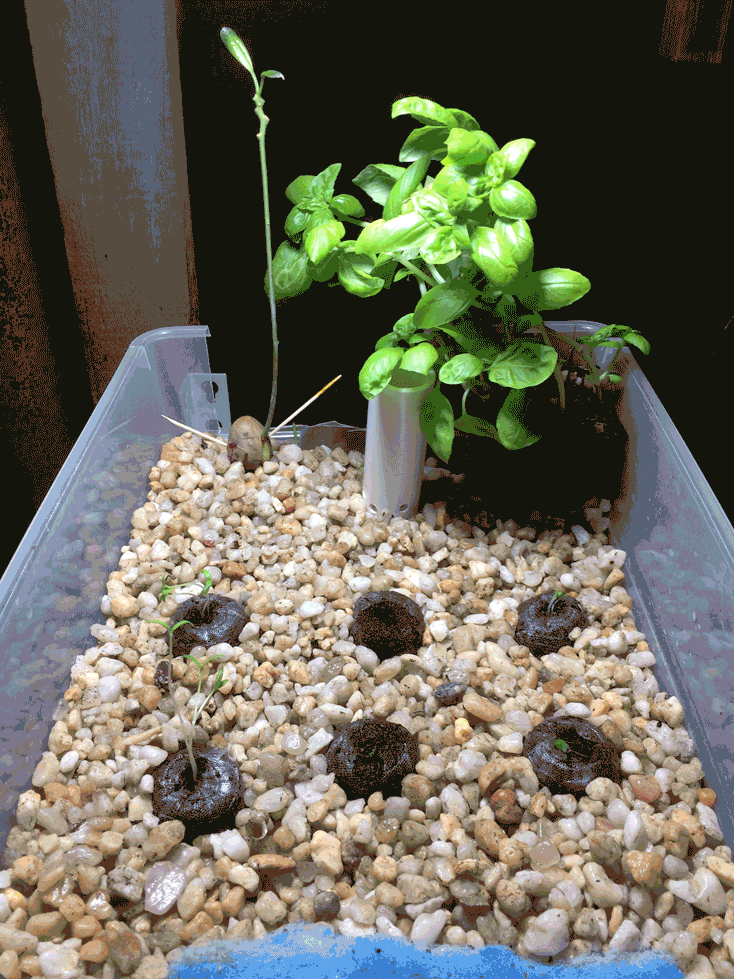
And just today, I had the first blossoms open:
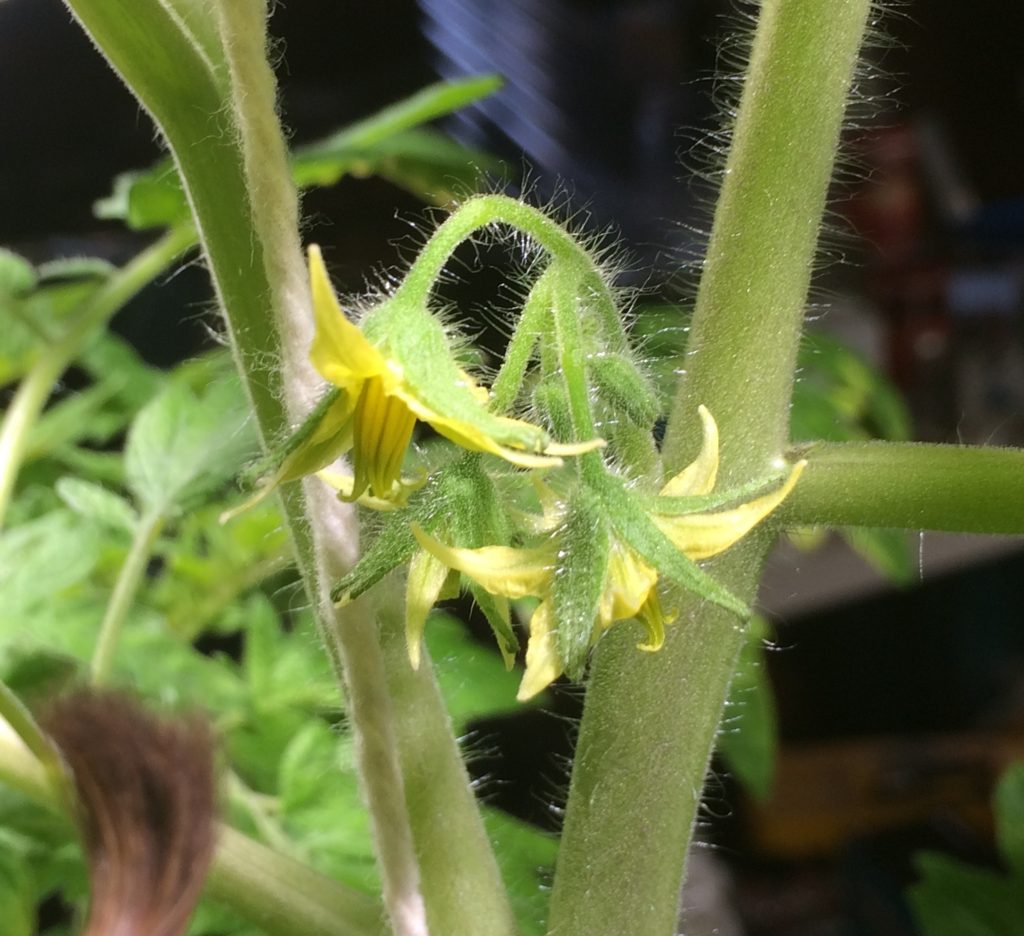
The month after I started the Prototype, I decided to break down my 40 gallon tank rack, and convert the top two tiers of space into a single grow bed shelf.
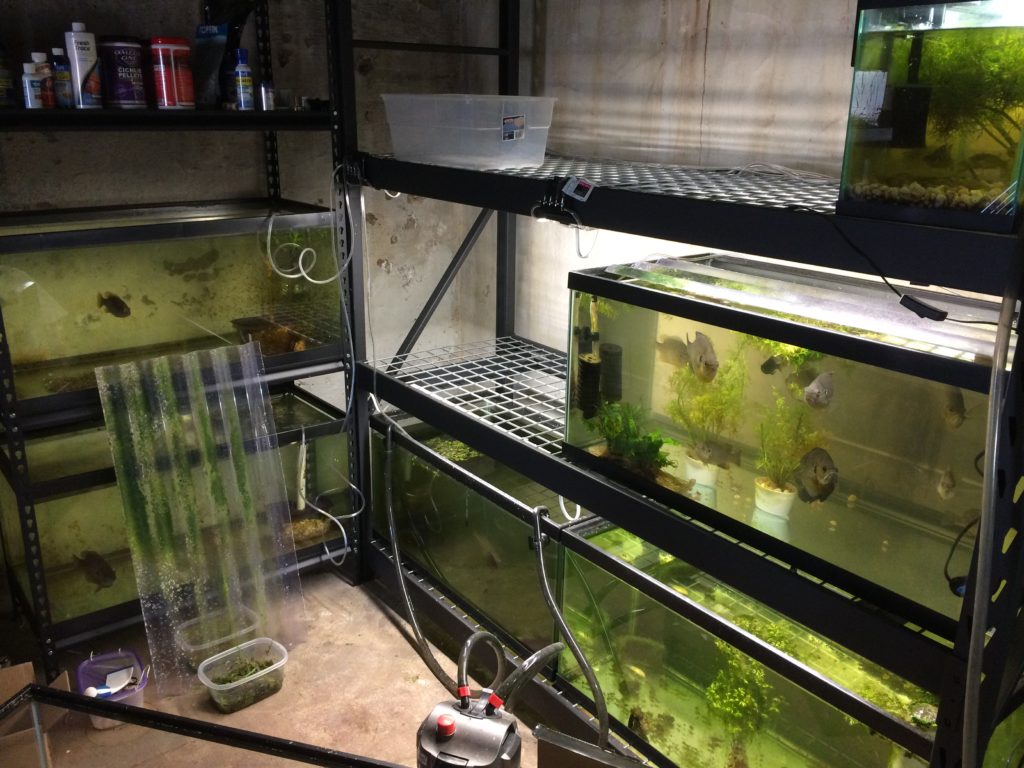
Putting two 40 gallon tanks on the bottom rack (our wild specimens on the left, out domesticated sunfish on the right), I invested in some Hefty 40 quart storage tubs (two per tank), plumbed them, filled them with gravel, and bought some dedicated Beckett 290 gallon per hour pumps to keep the water flowing. For lighting, I put two of the 90 watt replacement full spectrum LED lights hanging above each tub.
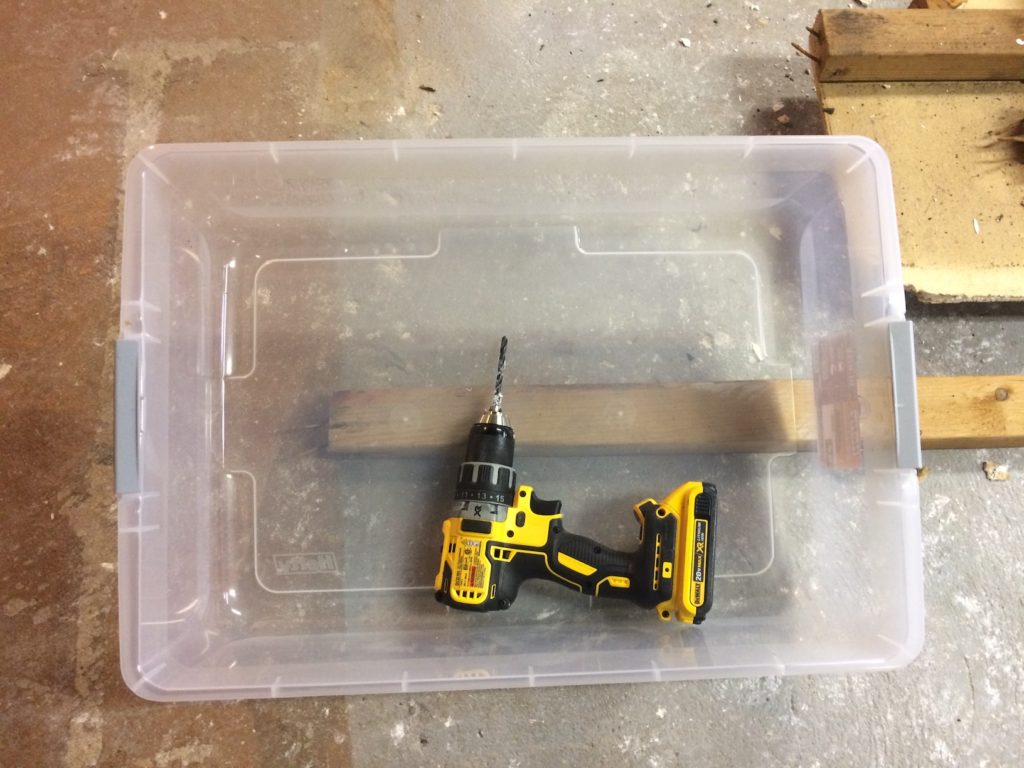
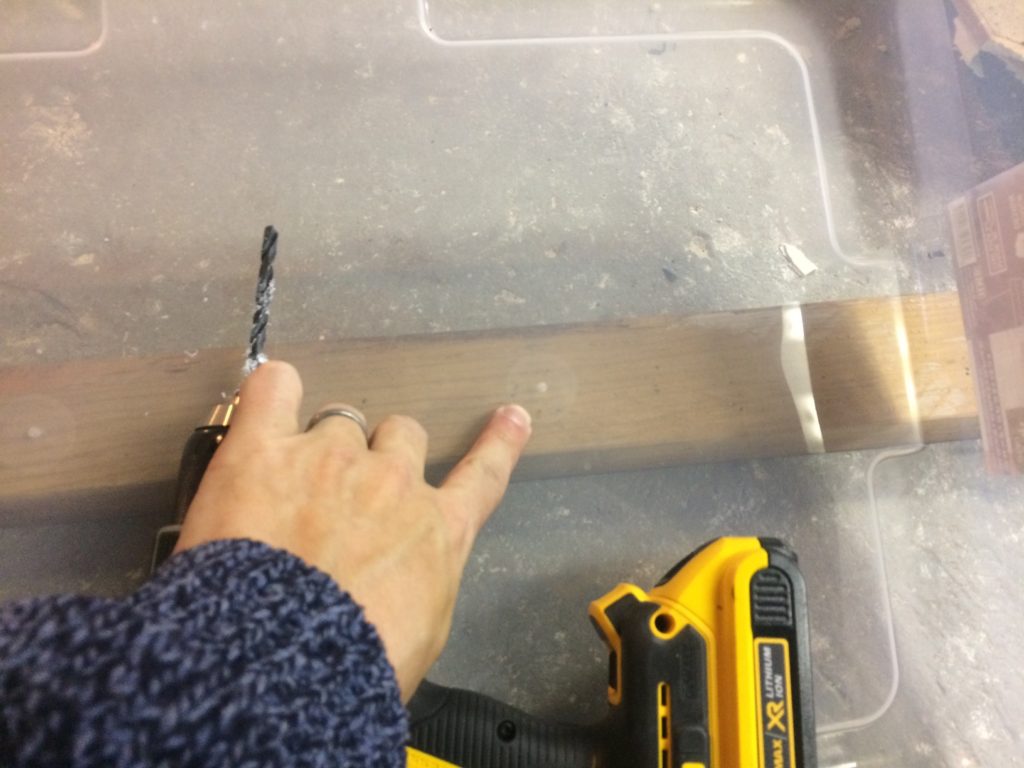
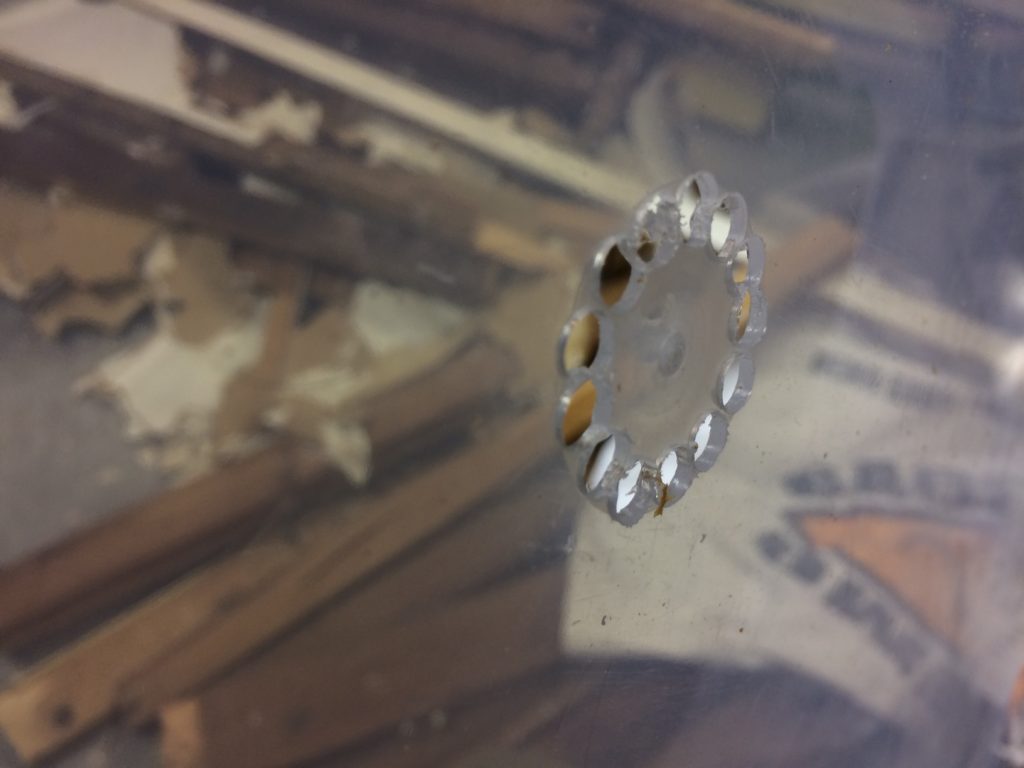
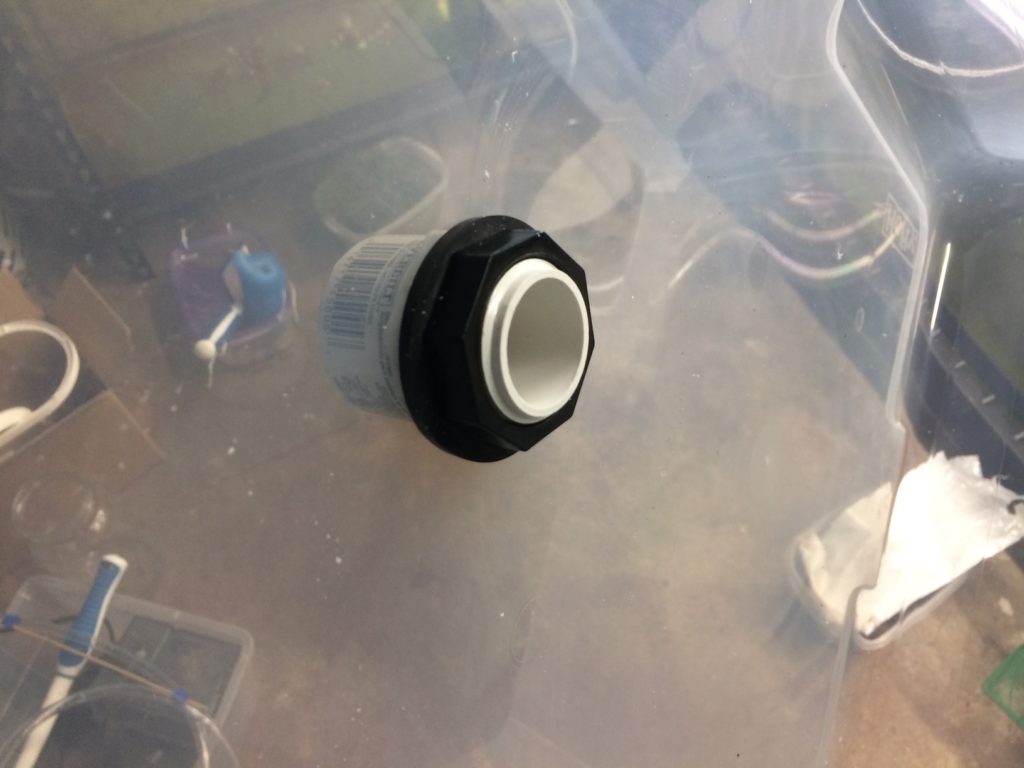
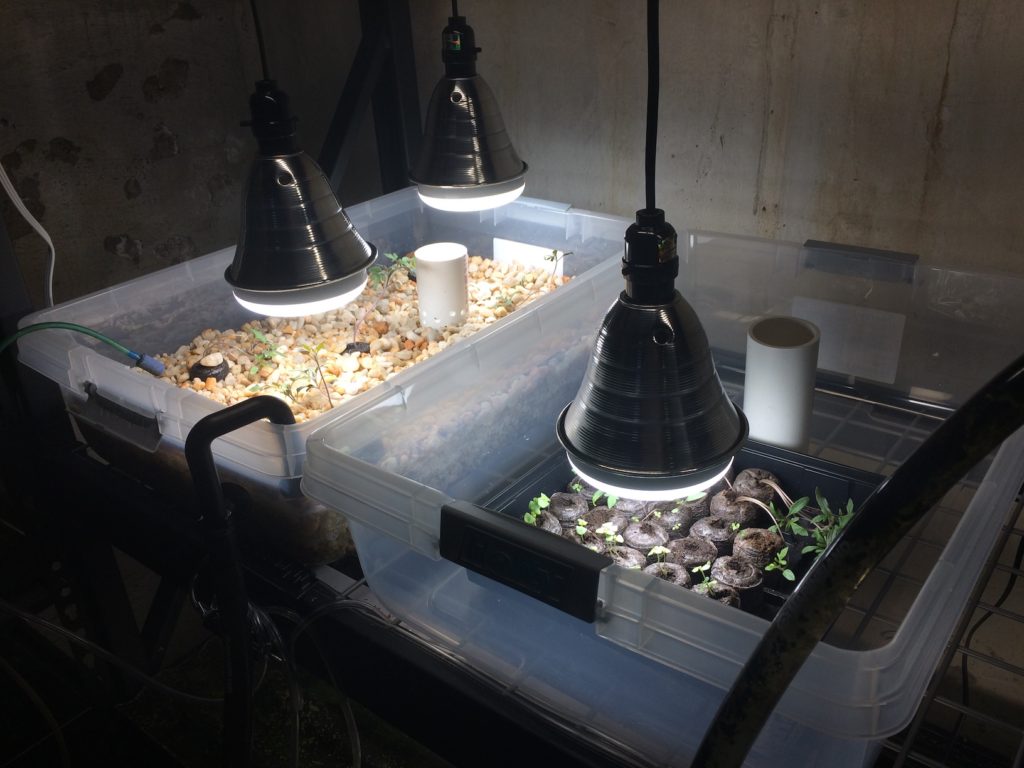
Having 1″ PVC returns at a length of approximately 2 feet allowed the returns to act like trompes, pulling air back down into the tanks, so when they run I don’t need to use an air pump to power a bubbler. 🙂
On the input end, I had to build a PVC splitting pipe for each tank, so that the water coming up from the pump watered both tubs evenly. I figured out a way to rig up some smaller CPVC in a “u-bend” so that the water also pushes air into the water before it hits the gravel bed as well – so there’s oxygen introduced on the way in, and oxygen introduced on the way out.
Once I had all four beds set up, I planted them one by one and watched things grow.
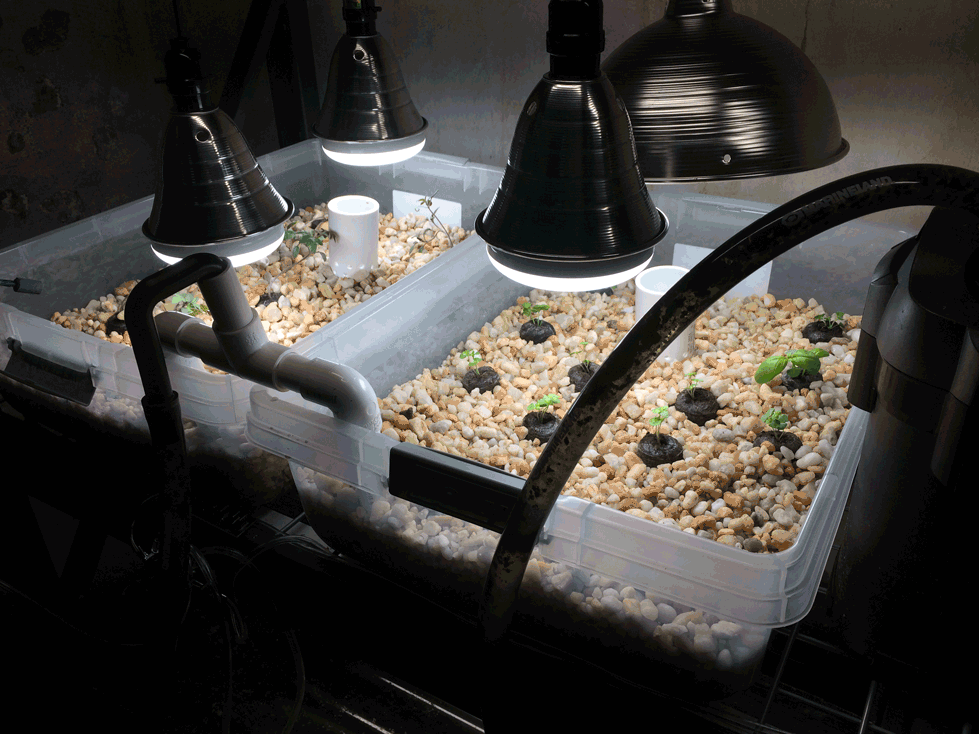
In the beds we planted – from left to right (1-4):
So far, only the basil has come ripe enough for us to enjoy on two occasions in caprese. It has the crisp bite of spinach and a really deep flavor.
That’s it for now. In my next entry I’ll go over some of the pitfalls I came across, as well as the next phase of this project’s prototype. 🙂
Peace
-Steve